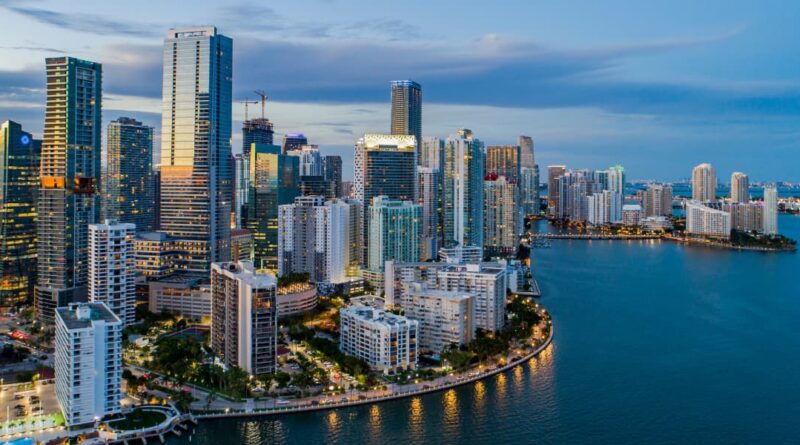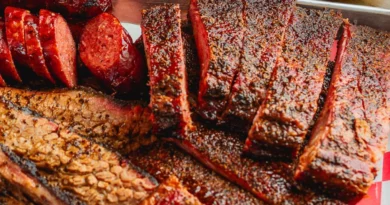History of Miami Florida
Miami, Florida, is renowned today as a vibrant and cosmopolitan city, a melting pot of cultures, and a major international hub. However, its journey from a sparsely inhabited region of swampland to a bustling metropolis is a story of ambition, transformation, and resilience. The history of Miami is a testament to the vision of its founders, the determination of its diverse communities, and the powerful forces of nature that have shaped its evolution.
Early Inhabitants: The Tequesta People
Long before European settlers arrived, the area now known as Miami was inhabited by the Tequesta people. The Tequesta were a Native American tribe who lived in southern Florida for over 2,000 years. They established villages along the Miami River and Biscayne Bay, where they hunted, fished, and gathered food from the abundant natural resources. The Tequesta’s primary settlement was located at the mouth of the Miami River, an area that would later become the heart of Miami.
The Tequesta were skilled canoe builders and seafarers, using the waterways as their primary means of transportation. Their society was complex, with distinct social classes and a religion that involved ceremonies and rituals to honor their gods. However, the arrival of Europeans in the 16th century marked the beginning of the end for the Tequesta. The Spanish, who were the first Europeans to encounter the tribe, brought with them diseases that decimated the population. By the late 18th century, the Tequesta had all but disappeared, leaving behind little more than archaeological evidence of their existence.
Spanish and British Rule
In 1566, the Spanish established a mission in the Miami area, but it was short-lived due to resistance from the local Native American population and the harsh conditions. For the next two centuries, the region remained largely undeveloped, with only occasional visits from explorers and traders.
In 1763, following the Seven Years’ War, Florida was ceded to the British, marking the beginning of a brief period of British rule. During this time, the British encouraged settlement in the region, and a few small communities began to take root. However, the British period was short-lived, as Florida was returned to Spanish control in 1783 after the American Revolution.
The Seminole Wars and U.S. Acquisition
The early 19th century saw the arrival of the Seminole people, a group of Native Americans who migrated to Florida from the southeastern United States. The Seminoles, who were fleeing pressure from European-American settlers, established a strong presence in the region. This led to a series of conflicts known as the Seminole Wars, which were some of the longest and most costly wars fought by the United States against Native Americans.
The U.S. government sought to remove the Seminoles from Florida to open up the land for settlement. The wars, which lasted from 1816 to 1858, ultimately resulted in the forced removal of most Seminoles to reservations west of the Mississippi River. However, a small group of Seminoles managed to resist removal and remained in the Florida Everglades, where their descendants still live today.
In 1821, Spain ceded Florida to the United States, and the region began to attract settlers looking to take advantage of the fertile land and warm climate. However, Miami itself remained largely undeveloped, with only a few scattered settlements.
The Birth of Miami: Julia Tuttle and Henry Flagler
Miami’s transformation from a sleepy outpost to a thriving city can be largely attributed to two individuals: Julia Tuttle and Henry Flagler. Julia Tuttle, often referred to as the “Mother of Miami,” was a wealthy widow from Cleveland, Ohio, who purchased a large tract of land in the Miami area in the 1890s. Tuttle saw great potential in the region and envisioned it as a major city.
At the same time, Henry Flagler, a prominent industrialist and one of the co-founders of Standard Oil, was extending his Florida East Coast Railway down the Atlantic coast of Florida. Tuttle recognized that the railroad was key to Miami’s development and worked tirelessly to persuade Flagler to extend his railway to Miami.
According to local legend, Tuttle sent Flagler a fresh orange blossom during a particularly harsh winter in the northern United States, illustrating the region’s warm climate and agricultural potential. This gesture, combined with Tuttle’s offer of land and other incentives, convinced Flagler to bring his railroad to Miami. In 1896, the first train arrived in Miami, and the city was officially incorporated on July 28 of that year.
Early 20th Century: Boom and Bust
With the arrival of the railroad, Miami began to grow rapidly. The city attracted settlers, investors, and tourists, eager to take advantage of its tropical climate and burgeoning economy. The early 20th century saw a real estate boom, with developers constructing hotels, resorts, and residential neighborhoods to accommodate the influx of new residents and visitors.
However, the boom was short-lived. The Great Miami Hurricane of 1926 dealt a devastating blow to the city, causing widespread destruction and loss of life. The hurricane, coupled with the subsequent collapse of the Florida land boom and the onset of the Great Depression, brought Miami’s rapid growth to a halt. The city struggled through the 1930s, with high unemployment and economic hardship.
World War II and Post-War Growth
World War II marked a turning point for Miami. The city’s strategic location made it an important military hub, with numerous bases and training facilities established in the area. The influx of military personnel and defense-related industries provided a much-needed boost to the local economy.
After the war, many servicemen who had been stationed in Miami returned to the city with their families, contributing to a post-war population boom. The 1950s and 1960s saw Miami emerge as a major metropolitan area, with new neighborhoods, highways, and infrastructure projects transforming the city.
The Cuban Influence
One of the most significant events in Miami’s history was the Cuban Revolution of 1959. The rise of Fidel Castro and the establishment of a communist government in Cuba led to a mass exodus of Cuban refugees, many of whom settled in Miami. The influx of Cuban immigrants transformed the city’s cultural and social landscape, establishing Miami as the capital of the Cuban diaspora.
The Cuban community quickly became a dominant force in Miami’s economy, politics, and culture. Little Havana, a neighborhood in the heart of Miami, became the center of Cuban-American life, with its vibrant street life, Cuban restaurants, and cultural institutions.
Modern Miami: A Global City
Today, Miami is a global city known for its diverse population, booming economy, and international influence. The city is a major center for finance, commerce, culture, and tourism. Miami’s skyline is a testament to its rapid growth, with towering skyscrapers reflecting the city’s status as a major urban center.
Miami’s population continues to be shaped by waves of immigration, particularly from Latin America and the Caribbean. This has resulted in a unique cultural mosaic, where languages, traditions, and cuisines from around the world coexist. The city’s annual events, such as Art Basel Miami Beach, the Miami International Film Festival, and the Miami Carnival, showcase its dynamic cultural scene.
Despite its many successes, Miami faces ongoing challenges, including climate change and rising sea levels, which threaten its coastal infrastructure. However, the city’s history of resilience suggests that it will continue to adapt and thrive in the face of adversity.
Discover more from City Towner
Subscribe to get the latest posts sent to your email.




